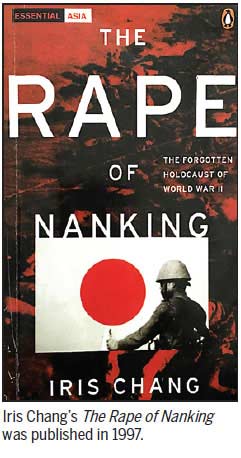 |
One such occasion involved an interview with Xia Shuqin, a massacre survivor who still bore the scars of the deep bayonet cuts.
"We went with Xia Shuqin, a 66-year-old massacre survivor, to her old house, where the killings took place when she was age 8," Yang said. "Pointing to the dilapidated wooden lattice windows, she told us that it was through those windows that she witnessed her family's horrible deaths. If you knew Iris Chang's family history, you would understand how those interviews must have resonated with her."
In March 1968, Iris Chang was born in the United States to Chinese immigrant parents. "Iris was a curious child," Ying-Ying Chang recalled. "When she was around 8 or 9 she kept asking us what we were doing at her age. That's really the beginning of her story."
On July 7, 1937, the war between China and Japan officially started, and in November, China's Nationalist Government announced that it was moving its capital from Nanjing to the southwestern city of Chongqing. A mass flight ensued. Ying-Ying Chang's father and his pregnant wife left Nanjing four weeks before the Japanese entered the city.
The family stayed first in the city of Guiyang, before moving to Chongqing, where Ying-Ying Chang was born in 1940. At that time, Shau-Jin Chang, her future husband and Iris' father, was living nearby, on the outskirts of the city.
Born in 1937, Shau-Jin Chang was age 6 months when his family arrived in Chongqing. Even now, almost 80 years later, he remembers the scene during the bombing raids.
"The Japanese were bombing virtually around the clock. Coming temporarily from the underground bomb shelter, I saw people outside with blood-splattered faces. I was about 6 at the time. However, my father told me that what happened in Chongqing was nothing compared with the suffering and carnage in Nanjing."
